Qiongxiu Li
Shared Path: Unraveling Memorization in Multilingual LLMs through Language Similarities
May 21, 2025Abstract:We present the first comprehensive study of Memorization in Multilingual Large Language Models (MLLMs), analyzing 95 languages using models across diverse model scales, architectures, and memorization definitions. As MLLMs are increasingly deployed, understanding their memorization behavior has become critical. Yet prior work has focused primarily on monolingual models, leaving multilingual memorization underexplored, despite the inherently long-tailed nature of training corpora. We find that the prevailing assumption, that memorization is highly correlated with training data availability, fails to fully explain memorization patterns in MLLMs. We hypothesize that treating languages in isolation - ignoring their similarities - obscures the true patterns of memorization. To address this, we propose a novel graph-based correlation metric that incorporates language similarity to analyze cross-lingual memorization. Our analysis reveals that among similar languages, those with fewer training tokens tend to exhibit higher memorization, a trend that only emerges when cross-lingual relationships are explicitly modeled. These findings underscore the importance of a language-aware perspective in evaluating and mitigating memorization vulnerabilities in MLLMs. This also constitutes empirical evidence that language similarity both explains Memorization in MLLMs and underpins Cross-lingual Transferability, with broad implications for multilingual NLP.
LAGO: Few-shot Crosslingual Embedding Inversion Attacks via Language Similarity-Aware Graph Optimization
May 21, 2025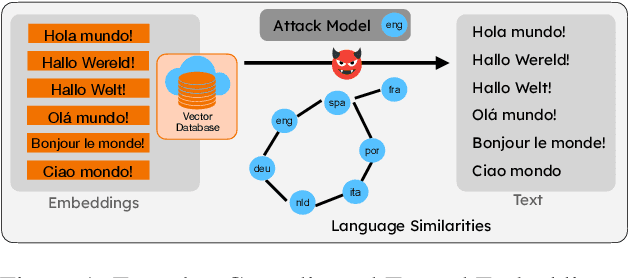

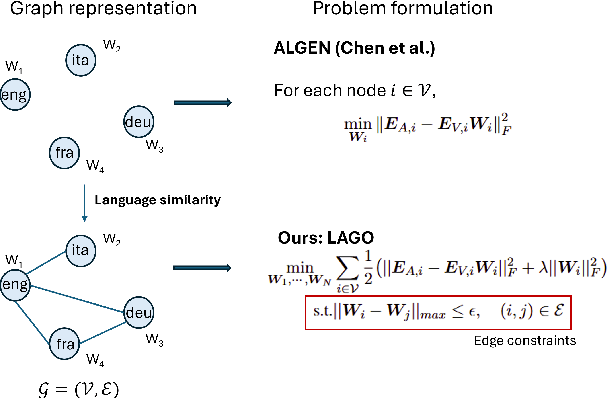
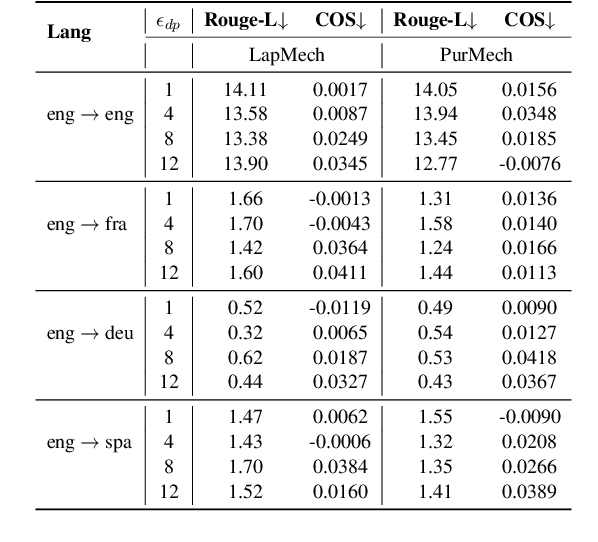
Abstract:We propose LAGO - Language Similarity-Aware Graph Optimization - a novel approach for few-shot cross-lingual embedding inversion attacks, addressing critical privacy vulnerabilities in multilingual NLP systems. Unlike prior work in embedding inversion attacks that treat languages independently, LAGO explicitly models linguistic relationships through a graph-based constrained distributed optimization framework. By integrating syntactic and lexical similarity as edge constraints, our method enables collaborative parameter learning across related languages. Theoretically, we show this formulation generalizes prior approaches, such as ALGEN, which emerges as a special case when similarity constraints are relaxed. Our framework uniquely combines Frobenius-norm regularization with linear inequality or total variation constraints, ensuring robust alignment of cross-lingual embedding spaces even with extremely limited data (as few as 10 samples per language). Extensive experiments across multiple languages and embedding models demonstrate that LAGO substantially improves the transferability of attacks with 10-20% increase in Rouge-L score over baselines. This work establishes language similarity as a critical factor in inversion attack transferability, urging renewed focus on language-aware privacy-preserving multilingual embeddings.
Optimal Privacy-Preserving Distributed Median Consensus
Mar 13, 2025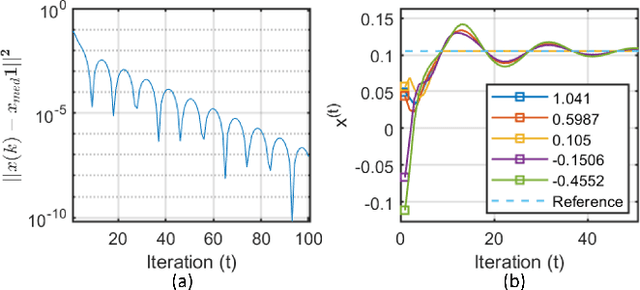
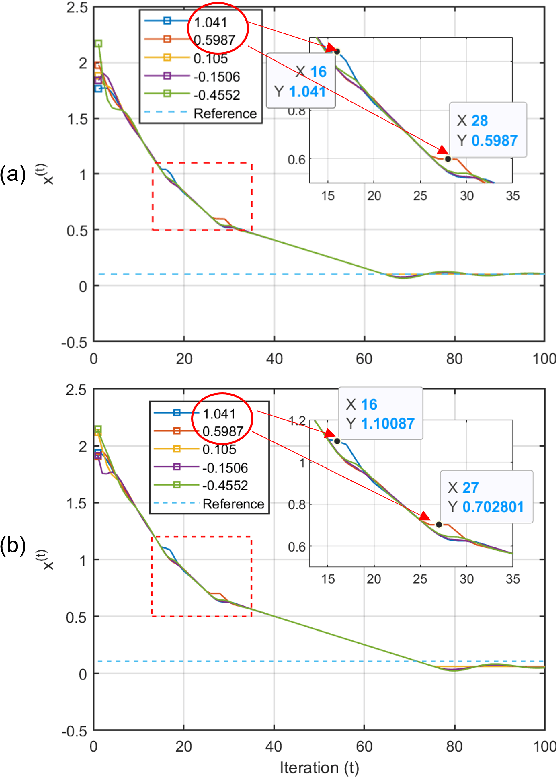
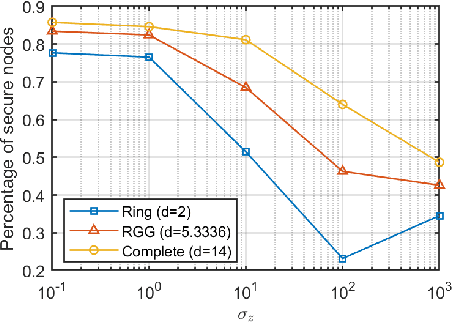
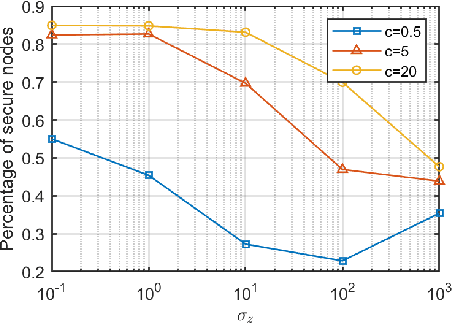
Abstract:Distributed median consensus has emerged as a critical paradigm in multi-agent systems due to the inherent robustness of the median against outliers and anomalies in measurement. Despite the sensitivity of the data involved, the development of privacy-preserving mechanisms for median consensus remains underexplored. In this work, we present the first rigorous analysis of privacy in distributed median consensus, focusing on an $L_1$-norm minimization framework. We establish necessary and sufficient conditions under which exact consensus and perfect privacy-defined as zero information leakage-can be achieved simultaneously. Our information-theoretic analysis provides provable guarantees against passive and eavesdropping adversaries, ensuring that private data remain concealed. Extensive numerical experiments validate our theoretical results, demonstrating the practical feasibility of achieving both accuracy and privacy in distributed median consensus.
Byzantine-Resilient Federated Learning via Distributed Optimization
Mar 13, 2025Abstract:Byzantine attacks present a critical challenge to Federated Learning (FL), where malicious participants can disrupt the training process, degrade model accuracy, and compromise system reliability. Traditional FL frameworks typically rely on aggregation-based protocols for model updates, leaving them vulnerable to sophisticated adversarial strategies. In this paper, we demonstrate that distributed optimization offers a principled and robust alternative to aggregation-centric methods. Specifically, we show that the Primal-Dual Method of Multipliers (PDMM) inherently mitigates Byzantine impacts by leveraging its fault-tolerant consensus mechanism. Through extensive experiments on three datasets (MNIST, FashionMNIST, and Olivetti), under various attack scenarios including bit-flipping and Gaussian noise injection, we validate the superior resilience of distributed optimization protocols. Compared to traditional aggregation-centric approaches, PDMM achieves higher model utility, faster convergence, and improved stability. Our results highlight the effectiveness of distributed optimization in defending against Byzantine threats, paving the way for more secure and resilient federated learning systems.
From Centralized to Decentralized Federated Learning: Theoretical Insights, Privacy Preservation, and Robustness Challenges
Mar 10, 2025



Abstract:Federated Learning (FL) enables collaborative learning without directly sharing individual's raw data. FL can be implemented in either a centralized (server-based) or decentralized (peer-to-peer) manner. In this survey, we present a novel perspective: the fundamental difference between centralized FL (CFL) and decentralized FL (DFL) is not merely the network topology, but the underlying training protocol: separate aggregation vs. joint optimization. We argue that this distinction in protocol leads to significant differences in model utility, privacy preservation, and robustness to attacks. We systematically review and categorize existing works in both CFL and DFL according to the type of protocol they employ. This taxonomy provides deeper insights into prior research and clarifies how various approaches relate or differ. Through our analysis, we identify key gaps in the literature. In particular, we observe a surprising lack of exploration of DFL approaches based on distributed optimization methods, despite their potential advantages. We highlight this under-explored direction and call for more research on leveraging distributed optimization for federated learning. Overall, this work offers a comprehensive overview from centralized to decentralized FL, sheds new light on the core distinctions between approaches, and outlines open challenges and future directions for the field.
Trustworthy Machine Learning via Memorization and the Granular Long-Tail: A Survey on Interactions, Tradeoffs, and Beyond
Mar 10, 2025
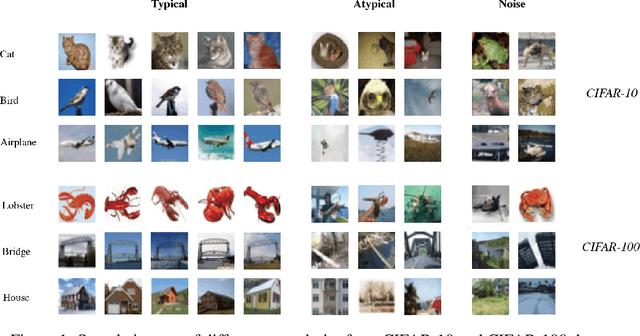
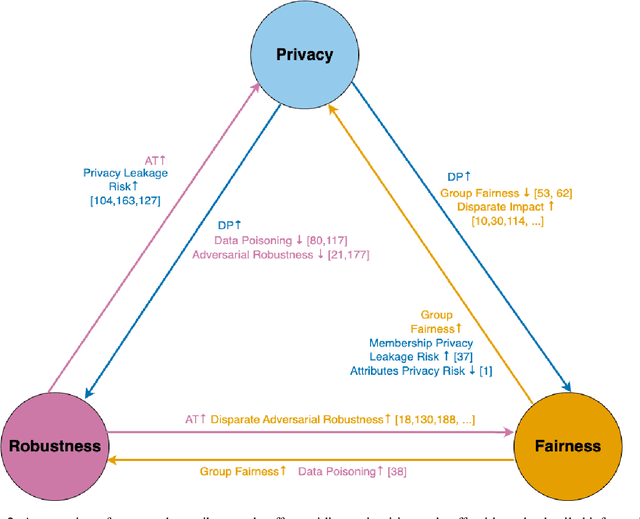
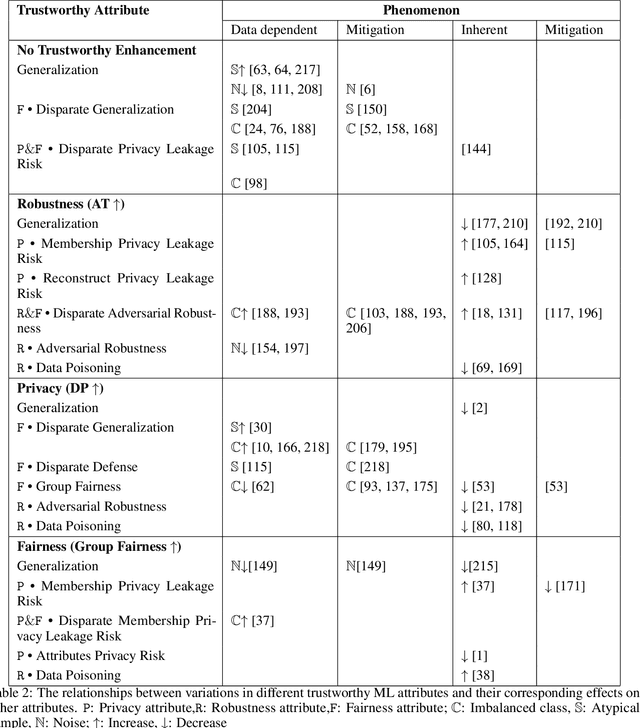
Abstract:The role of memorization in machine learning (ML) has garnered significant attention, particularly as modern models are empirically observed to memorize fragments of training data. Previous theoretical analyses, such as Feldman's seminal work, attribute memorization to the prevalence of long-tail distributions in training data, proving it unavoidable for samples that lie in the tail of the distribution. However, the intersection of memorization and trustworthy ML research reveals critical gaps. While prior research in memorization in trustworthy ML has solely focused on class imbalance, recent work starts to differentiate class-level rarity from atypical samples, which are valid and rare intra-class instances. However, a critical research gap remains: current frameworks conflate atypical samples with noisy and erroneous data, neglecting their divergent impacts on fairness, robustness, and privacy. In this work, we conduct a thorough survey of existing research and their findings on trustworthy ML and the role of memorization. More and beyond, we identify and highlight uncharted gaps and propose new revenues in this research direction. Since existing theoretical and empirical analyses lack the nuances to disentangle memorization's duality as both a necessity and a liability, we formalize three-level long-tail granularity - class imbalance, atypicality, and noise - to reveal how current frameworks misapply these levels, perpetuating flawed solutions. By systematizing this granularity, we draw a roadmap for future research. Trustworthy ML must reconcile the nuanced trade-offs between memorizing atypicality for fairness assurance and suppressing noise for robustness and privacy guarantee. Redefining memorization via this granularity reshapes the theoretical foundation for trustworthy ML, and further affords an empirical prerequisite for models that align performance with societal trust.
DeMem: Privacy-Enhanced Robust Adversarial Learning via De-Memorization
Dec 10, 2024Abstract:Adversarial robustness, the ability of a model to withstand manipulated inputs that cause errors, is essential for ensuring the trustworthiness of machine learning models in real-world applications. However, previous studies have shown that enhancing adversarial robustness through adversarial training increases vulnerability to privacy attacks. While differential privacy can mitigate these attacks, it often compromises robustness against both natural and adversarial samples. Our analysis reveals that differential privacy disproportionately impacts low-risk samples, causing an unintended performance drop. To address this, we propose DeMem, which selectively targets high-risk samples, achieving a better balance between privacy protection and model robustness. DeMem is versatile and can be seamlessly integrated into various adversarial training techniques. Extensive evaluations across multiple training methods and datasets demonstrate that DeMem significantly reduces privacy leakage while maintaining robustness against both natural and adversarial samples. These results confirm DeMem's effectiveness and broad applicability in enhancing privacy without compromising robustness.
Faster-GCG: Efficient Discrete Optimization Jailbreak Attacks against Aligned Large Language Models
Oct 20, 2024



Abstract:Aligned Large Language Models (LLMs) have demonstrated remarkable performance across various tasks. However, LLMs remain susceptible to jailbreak adversarial attacks, where adversaries manipulate prompts to elicit malicious responses that aligned LLMs should have avoided. Identifying these vulnerabilities is crucial for understanding the inherent weaknesses of LLMs and preventing their potential misuse. One pioneering work in jailbreaking is the GCG attack, a discrete token optimization algorithm that seeks to find a suffix capable of jailbreaking aligned LLMs. Despite the success of GCG, we find it suboptimal, requiring significantly large computational costs, and the achieved jailbreaking performance is limited. In this work, we propose Faster-GCG, an efficient adversarial jailbreak method by delving deep into the design of GCG. Experiments demonstrate that Faster-GCG can surpass the original GCG with only 1/10 of the computational cost, achieving significantly higher attack success rates on various open-source aligned LLMs. In addition, We demonstrate that Faster-GCG exhibits improved attack transferability when testing on closed-sourced LLMs such as ChatGPT.
Large Language Models are Easily Confused: A Quantitative Metric, Security Implications and Typological Analysis
Oct 17, 2024
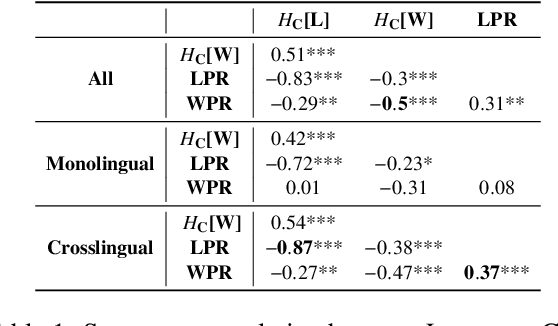

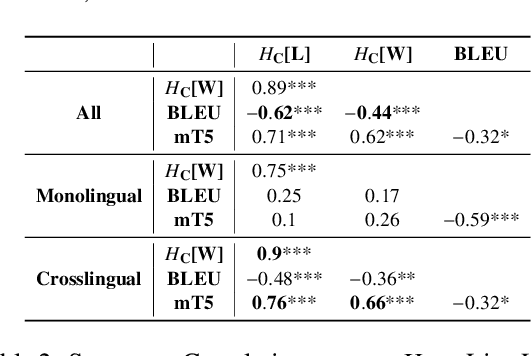
Abstract:Language Confusion is a phenomenon where Large Language Models (LLMs) generate text that is neither in the desired language, nor in a contextually appropriate language. This phenomenon presents a critical challenge in text generation by LLMs, often appearing as erratic and unpredictable behavior. We hypothesize that there are linguistic regularities to this inherent vulnerability in LLMs and shed light on patterns of language confusion across LLMs. We introduce a novel metric, Language Confusion Entropy, designed to directly measure and quantify this confusion, based on language distributions informed by linguistic typology and lexical variation. Comprehensive comparisons with the Language Confusion Benchmark (Marchisio et al., 2024) confirm the effectiveness of our metric, revealing patterns of language confusion across LLMs. We further link language confusion to LLM security, and find patterns in the case of multilingual embedding inversion attacks. Our analysis demonstrates that linguistic typology offers theoretically grounded interpretation, and valuable insights into leveraging language similarities as a prior for LLM alignment and security.
Privacy-Preserving Distributed Maximum Consensus Without Accuracy Loss
Sep 16, 2024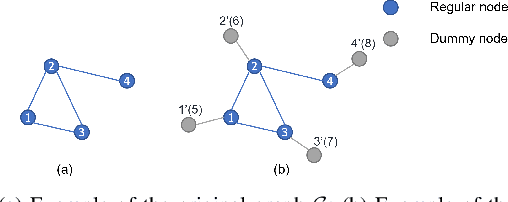
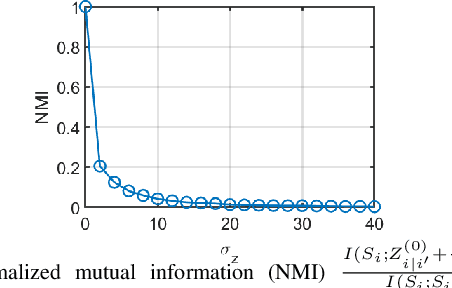
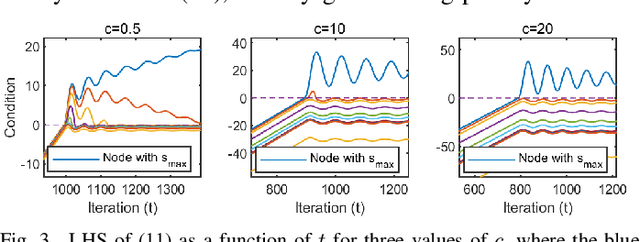
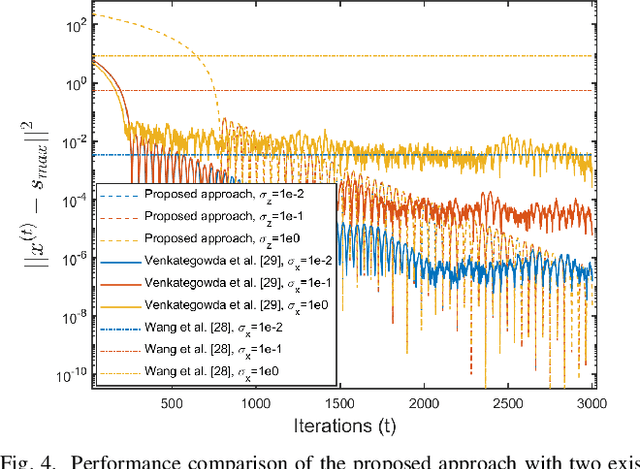
Abstract:In distributed networks, calculating the maximum element is a fundamental task in data analysis, known as the distributed maximum consensus problem. However, the sensitive nature of the data involved makes privacy protection essential. Despite its importance, privacy in distributed maximum consensus has received limited attention in the literature. Traditional privacy-preserving methods typically add noise to updates, degrading the accuracy of the final result. To overcome these limitations, we propose a novel distributed optimization-based approach that preserves privacy without sacrificing accuracy. Our method introduces virtual nodes to form an augmented graph and leverages a carefully designed initialization process to ensure the privacy of honest participants, even when all their neighboring nodes are dishonest. Through a comprehensive information-theoretical analysis, we derive a sufficient condition to protect private data against both passive and eavesdropping adversaries. Extensive experiments validate the effectiveness of our approach, demonstrating that it not only preserves perfect privacy but also maintains accuracy, outperforming existing noise-based methods that typically suffer from accuracy loss.
 Add to Chrome
Add to Chrome Add to Firefox
Add to Firefox Add to Edge
Add to Edge